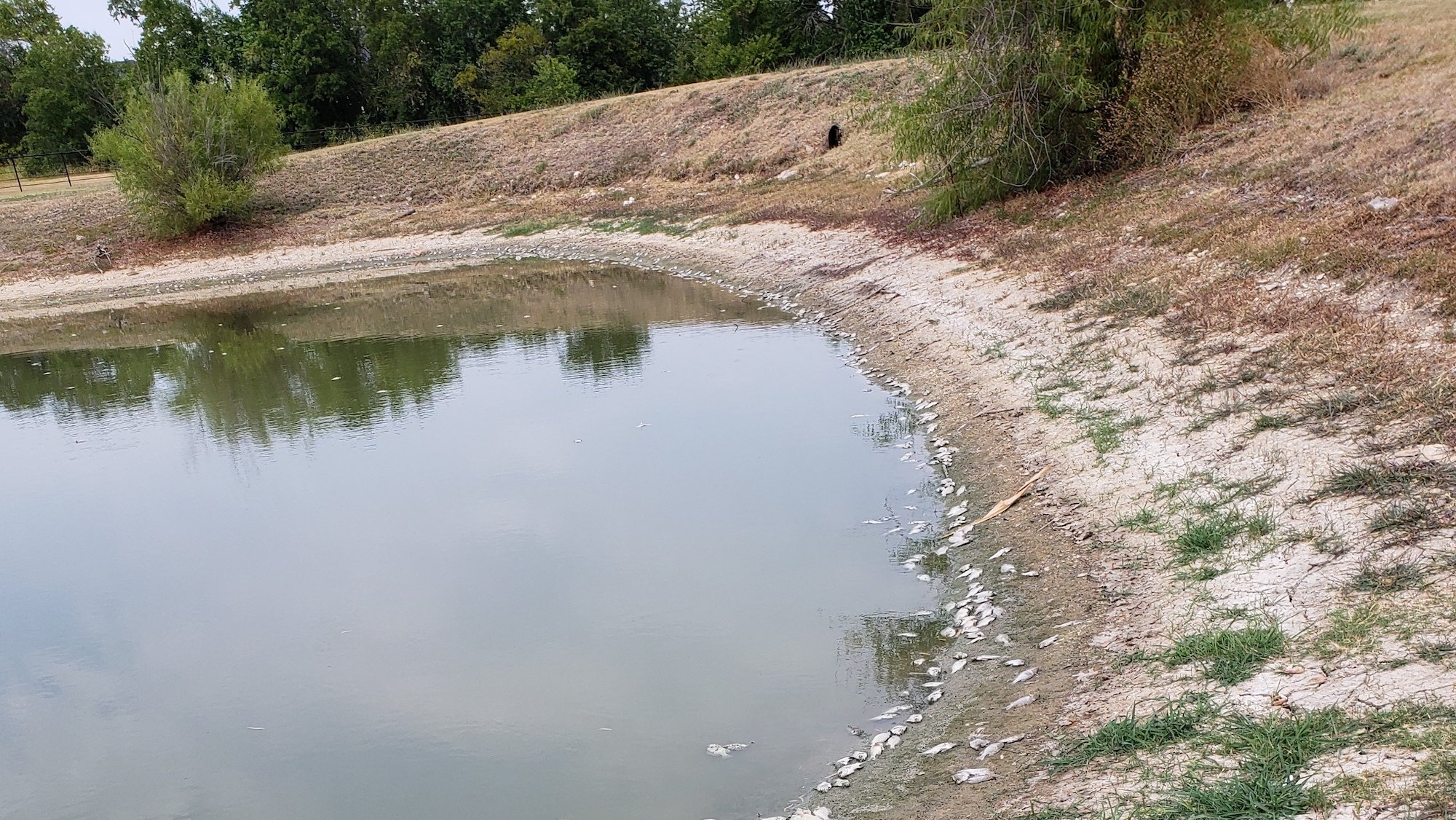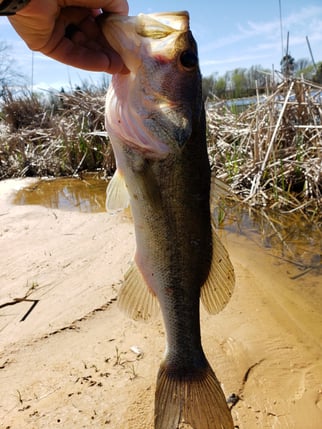Whether you are stocking a newly built/renovated pond or stocking an established pond, it is good to understand just how often your should expect to restock your pond. The answer will depend on several key factors.
- Has a fish kill occurred recently?
- What are your regular management efforts?
- Which species are stocked your pond?
In general, if you are taking an active role in the management of your pond, chances are the population densities/proportions are well balanced and self-sustaining. In that case, you probably won't need to restock, at least not frequently. However, some species that are stocked into ponds require special habitat structure to spawn, have been hybridized or genetically altered and cannot reproduce. In that scenario, you'll need to restock your pond with more regularity. Here are the key factors that will determine the frequency with which you'll need to restock your pond with fish.
1. Fish Kills Typically Require Restocking
There is no other event that is as devastating to your fish population as a fish kill. Depending on the cause and severity of the misfortune, the majority of your larger fish, if not the entire fishery, will have been lost and you will be left with an “empty” body of water. In this scenario, obviously, you'll need to think about restocking your pond. One thing to keep in mind before restocking is you should determine what caused the fish kill in the first place and take actions to prevent this event from occurring again.

II. Stocking for Trophy Class Fish
If growing trophy class fish, specifically Largemouth Bass, is your goal, you really need to pay attention to the predator/prey ratios of your pond. Specifically, you may need to let go of the idea that you should always release any Bass that you catch. While catch and release is an excellent practice in conservation on public lakes and reservoirs, in smaller pond environments this can spell disaster for your ponds growth rates and sustainability. Now, I’m not telling your to take your fillet knife to every 8 lb. Bass you land. However, depending on the size distribution and population density in your pond, I am recommending you remove Bass in the 10”-15” size range. This allows your desired and trophy class fish to continue to grow and reproduce while not having to focus all of their energy competing for limited resources.
III. Pond Management Practices that Influence Stocking Frequency
Ponds are under a lot less pressure when compared to public reservoirs, because of this your predator population has the opportunity to reach densities that overload the maximum forage availability provided by your baitfish. When talking to customers about their ponds, two of my first questions are;
- Have you harvested any Bass this season? and
- What is the condition of the fish you are catching?
 Many times the responses are very similar; “No I have not harvested anything this season," and "Most of the fish I’m catching are about the same size and have a very large head compared to their body.”
Many times the responses are very similar; “No I have not harvested anything this season," and "Most of the fish I’m catching are about the same size and have a very large head compared to their body.”
This is the quintessential overpopulated pond, not enough Bass have been harvested every year and the population has become stunted. As a result of this, the forage population has usually been all but reduced to large Bluegill that the Bass are unable to consume. In this situation, yes restocking needs to occur, in addition to a major predator harvest. Once the predator population has been reduced, restock your pond with medium sized Bluegill to help re-establish the correct size structure for a sustainable fishery. Once you have restored the correct population densities in your pond it is important to keep up with the management, predator harvest, to help keep up with the sustainability of your pond.
IV. The Restocking Needs of Various Species
When stocking other species such as Channel Catfish, Hybrid Striped Bass and Triploid Grass Carp it is important to keep good harvest records. These types of fish have very limited to no reproduction occurring so it is critical to keep track of the fish that are removed from the pond. Channel Catfish are a popular sport fish that are stocked in many private and public fisheries. These fish spawn in cavities, whether that is hollow logs, sunken buckets/ barrels or cutout under the bank. While your pond may have some sort of habitat that is suitable to this type of spawning activity the reproduction is going to be limited. So as you harvest these individuals, accurate records need to be kept to determine when the population has reached a level that additional fish need to be stocked.

The best practice for these species of fish is to restock the amount of fish harvested every season. If you harvest 100 catfish during the season, then next spring stock 100 6-8” catfish to replace them. This type of stocking pattern will ensure that you will always have adequate population densities and fish that are of a desired size class for you to harvest. The same method holds true for Hybrid Striped Bass. These fish are unable to reproduce because of their hybridization. Stocking additional fish as the larger individuals are removed ensures you keep a healthy size distribution. Additionally, Hybrid Striped Bass and Catfish are often fed a pelleted feed for additional resources and to increase growth rates. Keeping track of the population density helps to ensure you are not wasting resources and potentially disrupting the water quality by overfeeding.
Triploid Grass Carp are not everyone’s definition of a desired game fish and therefore they are not readily removed from fisheries. But, they do have a natural lifespan that causes their population to be reduced overtime. Stocked primarily for vegetation control, Triploid Grass Carp have been rendered sterile by a process that gives them an extra set of chromosomes, thus the name “Triploid." This is done to ensure that if these fish ever escape or are washed downstream from a private pond and find their way into a river system or public body of water, they do not establish a population and potentially destroy the aquatic habitat of that fishery. Here in Texas this is the only type of Grass Carp that is legal to stock into your pond. The process of stocking them is highly regulated and requires a blog post of its very own to fully explore. However, the primary reason to keep track of their population in your pond is because of they only have a 7-10 year lifespan. Having a record of when these fish were stocked and how many have been lost to natural causes can help you determine when additional fish need to be introduced to help keep your pond vegetation under control.
Is it time to restock your pond?
In conclusion the question of restocking your pond relies heavily on the occurrence of recent fish kills, species of fish your originally stocked and your involvement in managing it. With good management practices you can ensure that you always have a thriving population of desired size class fish, whatever species that might be. If you have any other question about your fishery or if you need to restock your pond, feel free to contact me at garrett@pondking.com.




